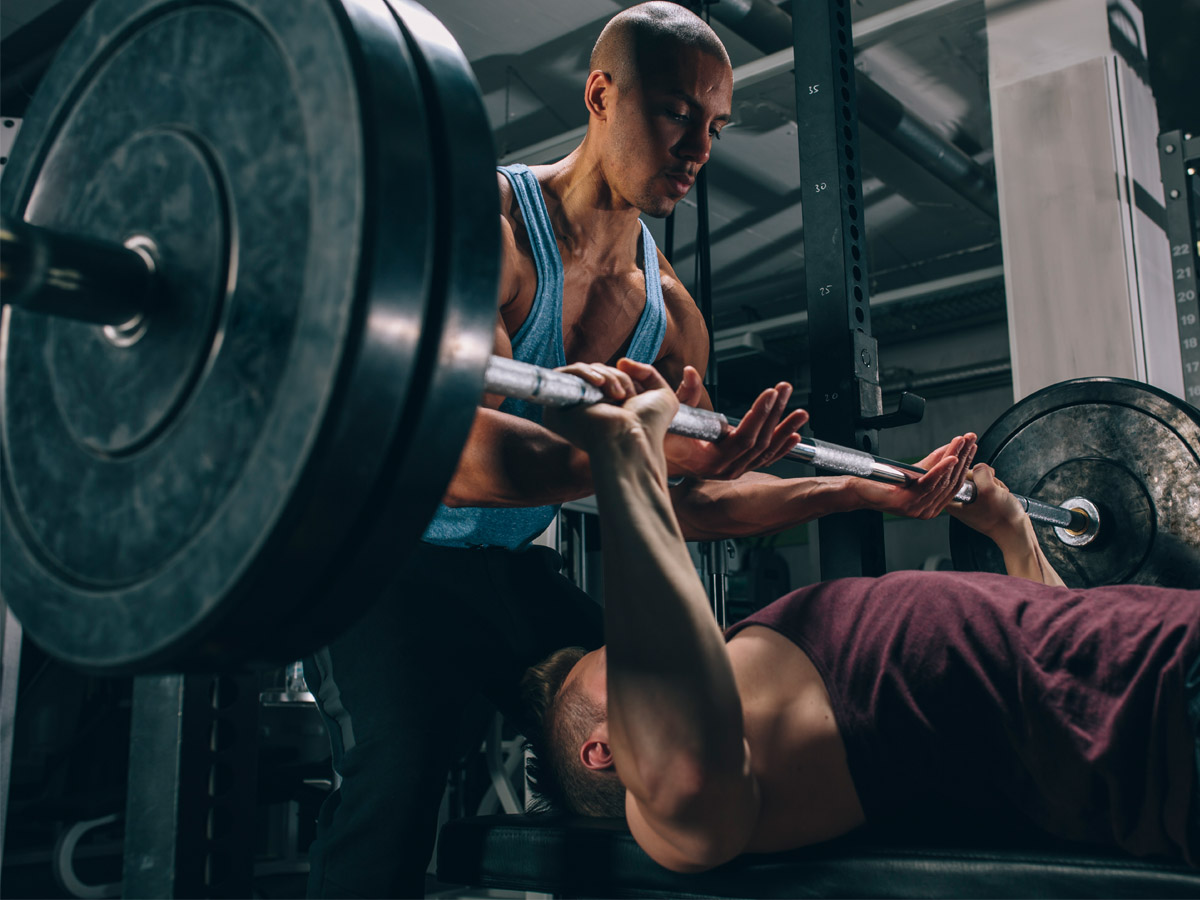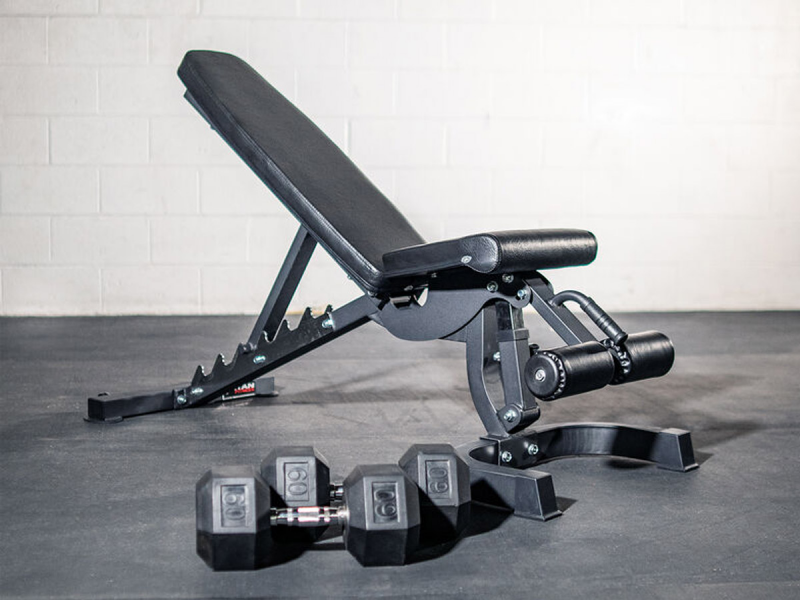- The bench press is a tried-and-true exercise that helps improve upper-body strength, while also benefitting your shoulders, back, and biceps.
- Even if you have little to no bench-pressing experience, you can still work your way up to feeling comfortable with the exercise
- We consulted with strength coach, and former powerlifter, Dean Guedo, who developed a plan to walk you through each of the form basics.
- If you want to setup your own bench press station, we’ve also included a round-up of the essential equipment you need to build your own.
Whether you’re new to working out or a gym-going vet, you’ve likely been the recipient of the question, “How much do you bench?” For decades, the bench press – which has you lay on your back, lower a barbell to your chest, and press it up – has been considered a true test of upper body strength.
It’s also a fantastic move to build up your entire torso, front to back, according to strength coach, former powerlifter, and host of the Fitness Devil Podcast, Dean Guedo.
“The bench press Increases your overall upper body strength because you can load it much heavier than with dumbbells,” he told Business Insider. “While most people think of it as a chest move, the bench press is a great exercise to hit your shoulders, biceps, and back muscles.”
Learning to bench press properly takes just a few steps. If you've never done the exercise, it's recommended you start out by just using the bar by itself without any weight. This allows you to work on perfecting your form without worrying about whether you can get the bar back up or not.
How to bench press correctly
Here's Guedo's step-by-step breakdown for mastering the bench press:
- Place an empty barbell onto the highest hooks of a bench-press rack. Lay down, back first, so that your eyes are directly under the barbell. Make sure your lower back is slightly arched and your feet are set firmly on the floor, too.
- Grab the bar with a grip slightly wider than shoulder-width and ensure that your hands close completely around the barbell.
- Squeeze your shoulder blades together and down so your back feels tight and then lift the bar out of the rack so it's over your chest. Slowly lower the weight to just below your nipples, keeping your elbows tucked in slightly. Once it's just above your chest, drive the bar back up.
- Keep performing this exact repetition with the barbell until you feel like you're in a groove. Once you've warmed up, you can then add as much weight as you like.
Editor's note: If possible, have someone act as a spotter while performing the bench press. This is especially vital for anyone just starting out with the exercise, as well as those attempting to lift heavy weight. The exercise can be done without a spotter, though this is only recommended for anyone completely comfortable with the bench press or those lifting lighter weight.
What to avoid
Here are the top three mistakes Guedo sees new bench-pressers make, as well as how to correct them.
- Unstable feet.
- "Pushing through your feet allows you to connect better with your hips, which helps you lift more weight," Guedo says. "Think about pulling back with your heels to engage your hamstrings and glutes. Hold that contraction throughout the press."
- Your lats aren't set (aka tight) before lifting.
-
- Before you pull the bar off the rack, your lats, which are the largest muscles in your back, should be tight. To do this, Guedo says to squeeze your shoulder blades together and down to stabilize your back and create a better base for you to press from. Doing this before you unrack the bar ensures you don't mess up the process. "You don't want to set your lats and shoulders once that weight is already bearing down on you," Guedo added.
-
- Your arms move as you press.
-
- Guedo asserts that you don't want your arms to move too far out of position as you're pressing the bar. This creates instability and in a worst-case scenario, results in you dropping the barbell onto yourself. To correct this, he says to squeeze the bar as hard as you can.
-
When to start adding more weight
Once you've mastered the mechanics, you'll want to start training to increase the weight. Here's an easy method of progression you can use to strengthen your bench press:
- Warm-up with the barbell and then load the barbell with a weight you can press around seven times comfortably. You should be able to do no more than two to three more reps.
- Set a timer for 10 minutes and aim to complete as many reps as possible within the time, resting as needed.
- If you get 30 or more reps, add 5 pounds during your next session and try to get 30 reps again.
- If you got less than 30, repeat the workout with the same weight next session until you hit the rep goal. Do this twice per week.
Feel free to perform any other exercises you want after this 10-minute set. After about 8 weeks of this, see what the heaviest weight you can press for three reps is. This is known as a three-rep-max and is safer than a one-rep-max as going to absolute failure can sometimes result in injury. Again, you'll want a spotter nearby to help, especially as you start to increase weight.
The essential gear you need to build your own bench press setup
The Rogue Bar 2.0
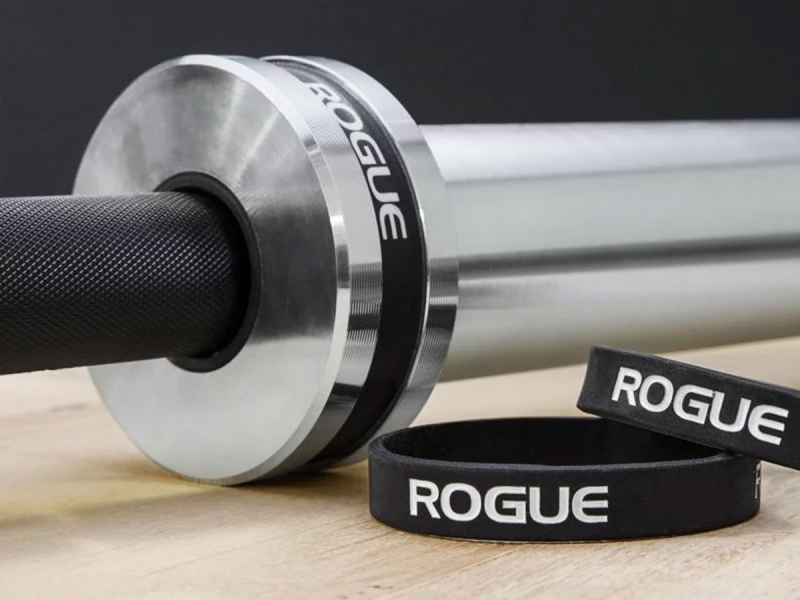
A barbell is a lifetime investment, so long as you invest in quality. The Rogue Bar 2.0 is a great choice for anyone, meeting all the standards of a classic barbell. It weighs 45 pounds, has quality knurling [aka the grip etched into the metal], and it's 28.5 millimeters in diameter, meaning it won't be hard to hold.
The major difference between this barbell and those you'll find in most commercial gyms is that it doesn't feature any knurling in the center. Since you'll be hoisting this over your chest, you don't necessarily want a grippy center, which can potentially catch on your shirt. Also, if you want to deadlift with it, you won't tear your shins up as the bar ascends.
The only exercise you may want to skip with this bar is heavy squats, as the centered knurling helps it stick to your shirt - though, if you're not going too heavy then it's probably alright.
Titan T-2 Series Power Rack
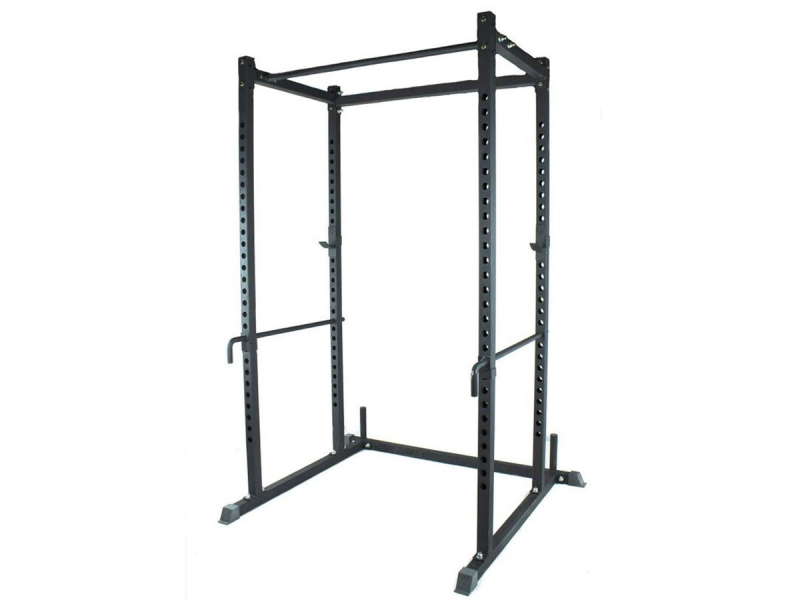
A rack is an essential piece of any bench press setup as you need it to support the barbell and any weight you're using. You could purchase a bench press specific rack but the problem with those is that they limit you to only that move. Instead, consider purchasing a power rack, like the T-2 Series Power Rack from Titan.
The T-2 Power Rack is 48" x 48", so you'll need plenty of space wherever you plan on putting it. It weighs roughly 110 pounds and doesn't require you to bolt it into your floor or wall.
To use it as a bench press rack, you'd need to just slide a bench into the middle of it, position the bar-supporting J-hooks to the correct level (the height of your arms fully extended from your back), and set the safety bars to your chest level (to catch the barbell in case you drop it).
As a nice bonus, this rack also supports squats, rows, presses, and pullups (thanks to an installed bar on the top of the rack). It's able to hold up to 700 pounds, which is about as much support as you'll likely need. The T-2 Power Rack is a must-own for any home gym owner who wants to get stronger and bigger.
The major downside is that you have to install it yourself, so you'll need a wrench, a few hours of free time, and a friend to help.
Adjustable FID Bench
Considering the word "bench" is half the name of the exercise, it's smart to invest in a quality one you can rely on. When searching for a bench, it's best to pick one capable of shifting to a decline and incline position. This allows you to hit your chest muscles from different angles.
The FID bench also comes with footpads which let you lock in for moves like crunches and dumbbell flyes. It's about as utilitarian as you can get with a bench, which is good when you're holding a couple hundred pounds bearing down on you.
REP Fitness Bumper Plates
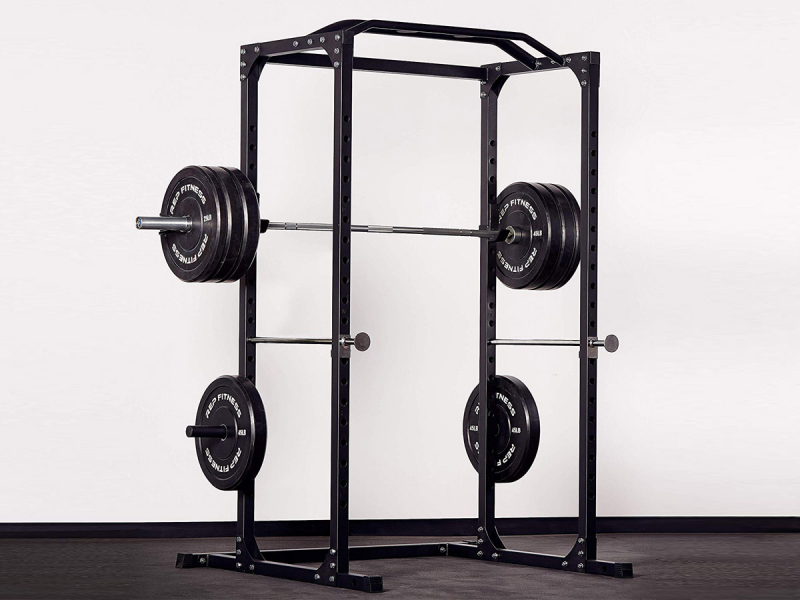
To progress your bench press, you'll want to have a variety of weights on hand. Bumper plates are also a nice addition to your setup as they won't cause too much damage to your floors if you drop them compared to traditional iron weights.
This 160-pound set from REP is likely enough for most novice to intermediate lifters. You can progress from your standard 45-pound bar all the way to 205 pounds, which is nothing to scoff at for most people. That said, more experienced lifters may want to consider investing in the 210- or 230-pound set which jumps up to $389.99 and $419.99, respectively.
